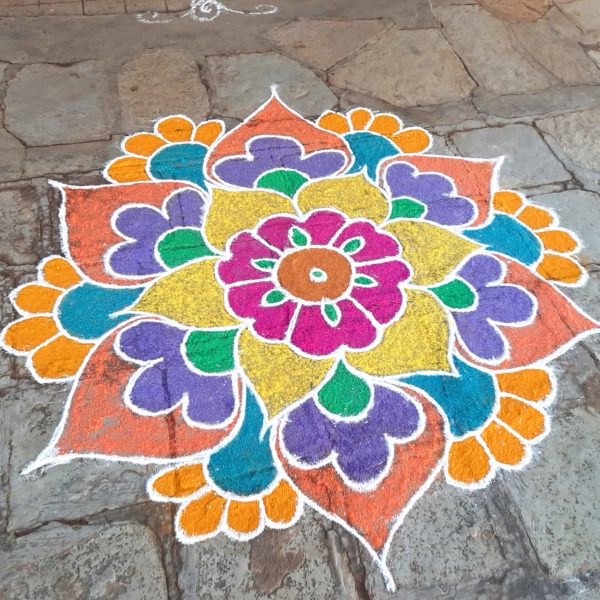
Sankranti Harvest Celebration
You know the children in the orphanages we support celebrates birthdays and cultural holidays. In India, the children love Sankranti. Keep reading and we’re sure you will see why.
Harvest Festival in India
There are many different holidays celebrated throughout India – one popular holiday being Sankranti. Although Sankranti is celebrated several different ways state-to-state, it is most popularly celebrated in the most southern Indian states of Andhra Pradesh, Karnataka, Telangana and Tamil Nadu.
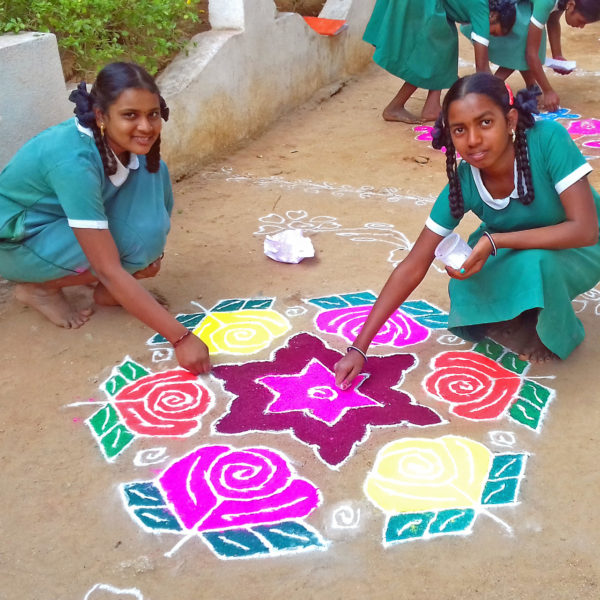
What is Sankranti?
Sankranti, also known as Pongal, is the celebration of the harvest coming to an end. In the west, this celebration would most commonly be known as a Harvest Festival, or a bit like our Thanksgiving. During the festival, the cattle are fed fruit and given time to rest, the food from the harvest is cooked and praised by those lucky enough to eat it and the community looks forward to making new resolutions and positive changes for the year to come.
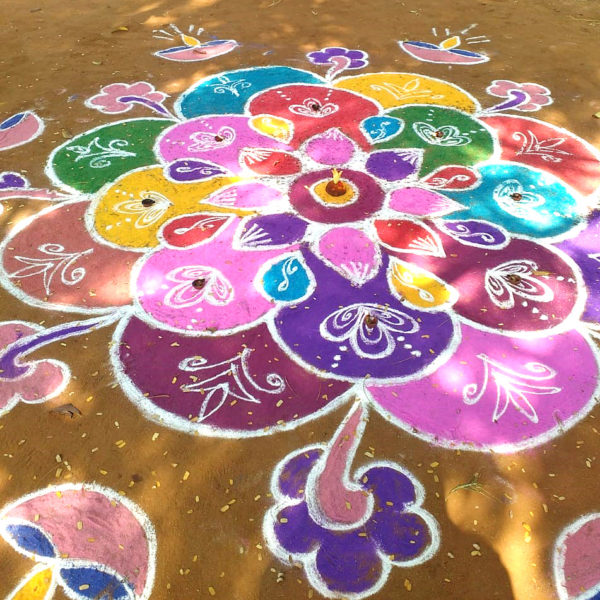
Four Days of Gratitude
Although the dates change slightly each year, Sankranti is typically celebrated in mid-January. Primarily a three-day celebration, there is an optional fourth day depending on where you live.
Before the festival begins decorations and preparations are in order. Houses are decorated with marigold flowers, mango leaves and Rangoli. These three decorations are meaningful in the Indian culture throughout the year. Marigolds are considered the “herb of the sun”. They are said to promote creativity, passion, brightness, positivity and happiness. It is believed that mango leaves bring good fortune to the home. Rangoli are designs created by hand with powders made from lime stone, red ochre, dry rice flour, turmeric and colored sand. They are typically drawn on the floor or at the entrance of a home to bring good luck and prosperity.
Let the Festival Commence!
The first day of Sankranti is called, Bhogi. On this day, people will spend time with their families in their homes. It’s a day for cleaning and they will dispose of any useless items, clean the dirt from the corners and rid any negative thoughts from the mind. By doing so, the community is making room for new objects or ideas to enter their lives and minds. The quote repeated throughout the day is, “evil is defeated by the good.”
“Sankranti gives our children the gift of time and traditions. At the end of the day, it doesn’t matter what festival you celebrate and how, but that you do it together as a family. Children love traditions and they learn very fast. It doesn’t matter which generation they belong to. Doing the simple things together as a family, like making a Rangoli or cooking a meal, means more to them than playing with the latest cool toy.” – Sister Suvartha, Sister Seline’s Memorial Home for Children
Makar Sankranti is the second day and is the main day of celebration. By this point the harvest is over and celebrations are in order. Everyone will wear new clothes – children will be in new outfits and will take part in traditional Indian folk dances such as Gummi or Kolattam (in photo above).
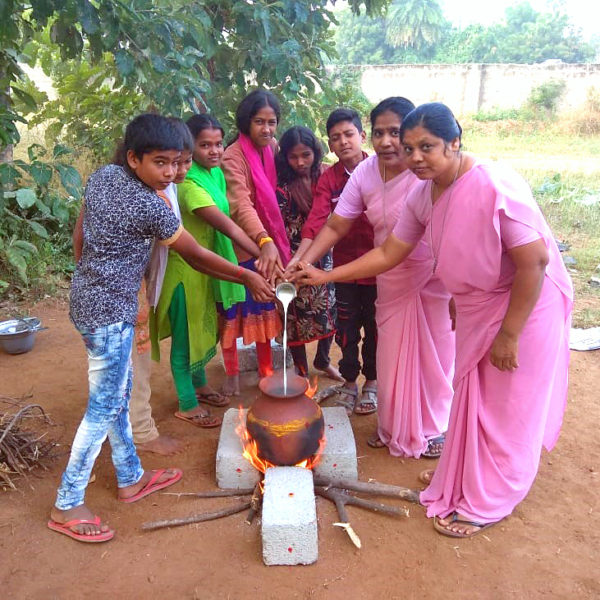
As part of the celebration, the community will cook rice in a clay pot filled with milk. Once the milk boils over they will yell and chant, “pongalo, Pongal!”, which means “boil over” or “flourish”. The milk boiling over in the clay pot symbolizes material abundance for the household. Makar Sankranti is a day of fun celebration with family and friends.
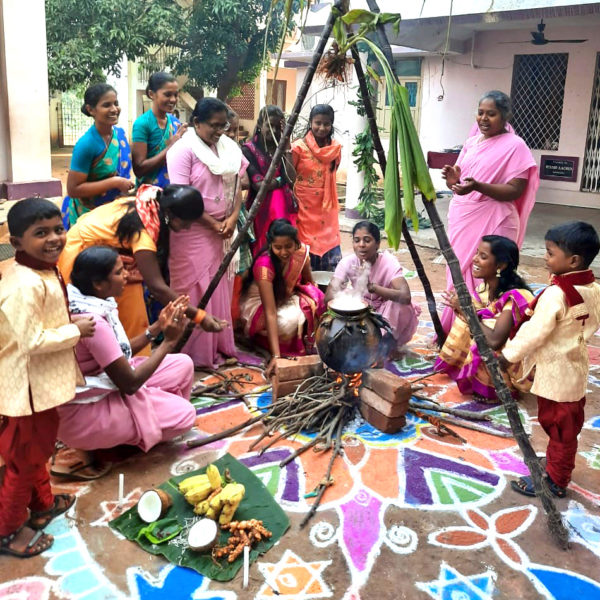
On the third day, called Kanuma, the community praises the farm animals – the cattle in particular. Kanuma is a day of rest for the cattle. Very similar to Thanksgiving in the United States, the community will give thanks to the animals for all the hard work they helped accomplish during the harvest. The cattle will be adorned with flowers and fed fruit. Kanuma is a day of recognition to the driving power behind all harvests – the cattle.
Kanuma is also a day to visit relatives and share sweets with family and friends. There are many traditional sweets and meals that play an important role during Sankranti celebrations. Most of these are made with rice, jaggery (sugar made from sugar cane) and sesame seeds. The most popular treats are ladoos, chikkis, khichdi and tilgul. Ladoos are sweet balls made with gram flour, ghee, jaggery and cardamom. Chikkis are a sweet brittle candy made from nuts and jaggery. Khichdi is a rice and lentil dish served with different variations of vegetables. Tilgul is a candy that is covered in sesame seeds. Not only are these tasty treats, but sesame seeds are highly valued in India. They are a rich source of vitamin E which keeps the body warm. The oil is also a great moisturizer for the body.
Mukkanuma is the fourth and last day of the festival. As mentioned previously, this fourth day might not exist throughout all the Indian states. Where it is celebrated, this day is all about feasting and merry making. No major ceremonies will take place. Mukkanuma is a day to eat good food and visit relatives – some communities might even leave food on banana leaves for the birds to take away.
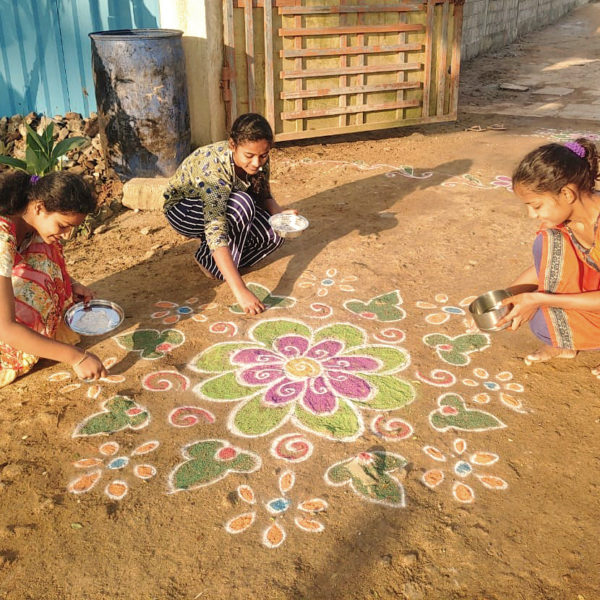
Sankranti Festivities at the World’s Children homes.
Sankranti is a fun filled holiday. In all of its variations, state-to-state, it is a meaningful festival where the days become longer and there is hope and positivity for the year to come. As you can imagine, this festival is highly anticipated by the World’s children’s homes.
“During the Sankranti/Pongal holidays our children hade a Rangoli competition. They played indoor games like Chinese checkers, chess etc. and outdoor games like skipping, hopping, kho kho and hide and seek. They read story books. They practiced songs and dances. Some of them are interested in drawing and painting.” – Sister Maria, St. Joseph’s Home for Children
Children look forward to the traditions, fun and laughter. Whether it is creating Rangoli designs, sharing a favorite jaggery sweet or receiving a new outfit – it is an exciting time to celebrate the summer months to come. The children can forget about all the hardships they previously endured and enjoy living in the moment.



